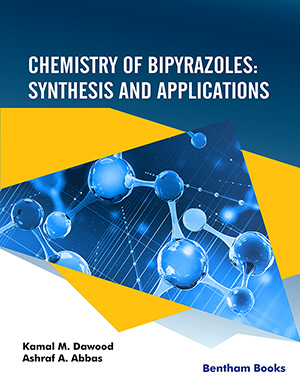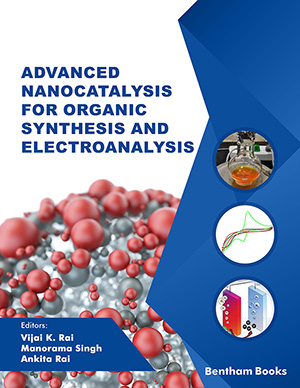
Abstract
The most remarkable difference between a chemical reaction and a lipase reaction is the fact that lipase possesses several substrate specificities, in particular, fatty acid specificity on hydrolysis, esterification, or transesterification reaction of the ester bond. Several lipases act weakly on polyunsaturated fatty acids (PUFAs) such as docosahexaenoic acid (DHA) and arachidonic acid. Through fatty acid specificity of lipases, a DHA-rich oil (acylglycerols) has been industrially produced from tuna oil. Lipase specificity also facilitates purification of PUFAs, conjugated linoleic acid isomers, tocopherols, and sterol esters and production of triacylglycerol that is DHA– rich at the sn– 1(3) position. Microorganism-mediated processes using Aeromonas hydrophila N– 6 are effective for production of rare unsaturated fatty acids and rare unsaturated fatty alcohols from several vegetable oils. These lipids are rarely observed in natural oils. We also demonstrate that Acinetobacter sp. N– 476– 2 effectively converts functional arachidonic acid to functional arachidonyl alcohol, which can be used as a substrate for medicine.
Keywords: Arachidonic acid, conjugated linoleic acid, docosahexaenoic acid, functional lipid, lipase, microbial conversion, plant sterol, polyunsaturated fatty acid.
Current Organic Chemistry
Title:Production and Purification of Functional Lipids Through Enzymatic and Microorganism-Mediated Processes
Volume: 17 Issue: 8
Author(s): Toshihiro Nagao, Yomi Watanabe, Hirofumi Nakano and Yuji Shimada
Affiliation:
Keywords: Arachidonic acid, conjugated linoleic acid, docosahexaenoic acid, functional lipid, lipase, microbial conversion, plant sterol, polyunsaturated fatty acid.
Abstract: The most remarkable difference between a chemical reaction and a lipase reaction is the fact that lipase possesses several substrate specificities, in particular, fatty acid specificity on hydrolysis, esterification, or transesterification reaction of the ester bond. Several lipases act weakly on polyunsaturated fatty acids (PUFAs) such as docosahexaenoic acid (DHA) and arachidonic acid. Through fatty acid specificity of lipases, a DHA-rich oil (acylglycerols) has been industrially produced from tuna oil. Lipase specificity also facilitates purification of PUFAs, conjugated linoleic acid isomers, tocopherols, and sterol esters and production of triacylglycerol that is DHA– rich at the sn– 1(3) position. Microorganism-mediated processes using Aeromonas hydrophila N– 6 are effective for production of rare unsaturated fatty acids and rare unsaturated fatty alcohols from several vegetable oils. These lipids are rarely observed in natural oils. We also demonstrate that Acinetobacter sp. N– 476– 2 effectively converts functional arachidonic acid to functional arachidonyl alcohol, which can be used as a substrate for medicine.
Export Options
About this article
Cite this article as:
Nagao Toshihiro, Watanabe Yomi, Nakano Hirofumi and Shimada Yuji, Production and Purification of Functional Lipids Through Enzymatic and Microorganism-Mediated Processes, Current Organic Chemistry 2013; 17 (8) . https://dx.doi.org/10.2174/1385272811317080003
| DOI https://dx.doi.org/10.2174/1385272811317080003 |
Print ISSN 1385-2728 |
| Publisher Name Bentham Science Publisher |
Online ISSN 1875-5348 |
Call for Papers in Thematic Issues
Catalytic C-H bond activation as a tool for functionalization of heterocycles
The major topic is the functionalization of heterocycles through catalyzed C-H bond activation. The strategies based on C-H activation not only provide straightforward formation of C-C or C-X bonds but, more importantly, allow for the avoidance of pre-functionalization of one or two of the cross-coupling partners. The beneficial impact of ...read more
Electrochemical C-X bond formation
Conventional methods for carrying out carbon–X bond formation are typically conducted at harsh reaction conditions, and rely on expensive catalysts as well as the use of stoichiometric, and perhaps toxic, oxidants. In this regard, electrochemical synthesis has recently been recognized as a sustainable and scalable strategy for the construction of ...read more
From Lab Bench to Algorithm: The Future of Organic Chemistry Powered by AI
Organic chemistry, with its intricate dance of molecules and reactions, is undergoing a transformation fuelled by the power of Artificial Intelligence (AI) and Machine Learning (ML). The integration of AI/ML with Organic Chemistry is revolutionizing the field by enhancing the efficiency and accuracy of chemical research and development. These technologies ...read more
N-Heterocyclics: Synthesis, Computational Studies, and Coordination Chemistry - A synthetic perspective
N-heterocycles, such as phenanthroline, quinoline, or their organometallic complexes, are widely used in a variety of fields, including chemistry, biochemistry, and coordination chemistry. They play a key role in many chemical and biological processes as biological ligands, medicinal agents, catalysts in organic synthesis, molecular probes and sensors, as well as ...read more
Related Journals
 31
31
- Author Guidelines
- Graphical Abstracts
- Fabricating and Stating False Information
- Research Misconduct
- Post Publication Discussions and Corrections
- Publishing Ethics and Rectitude
- Increase Visibility of Your Article
- Archiving Policies
- Peer Review Workflow
- Order Your Article Before Print
- Promote Your Article
- Manuscript Transfer Facility
- Editorial Policies
- Allegations from Whistleblowers
- Announcements
Related Articles
-
Mitochondrial Dysfunction and Lipid Homeostasis
Current Drug Metabolism Cardiovascular Risk in Postmenopausal Women with Polycystic Ovary Syndrome
Current Vascular Pharmacology SGLT-2 Inhibition: Novel Therapeutics for Reno-and Cardioprotection in Diabetes Mellitus
Current Diabetes Reviews Breast Cancer Biomarkers: Risk Assessment, Diagnosis, Prognosis, Prediction of Treatment Efficacy and Toxicity, and Recurrence
Current Pharmaceutical Design Direct Cardiac Reprogramming with Engineered miRNA Scaffolds
Current Pharmaceutical Design Natural Compounds with Cell Growth Inhibitory Activity in Human Tumor Cell Lines
Anti-Cancer Agents in Medicinal Chemistry Neprilysin: A Potential Therapeutic Target of Arterial Hypertension?
Current Cardiology Reviews Acute Coronary Syndromes in Patients with Atrial Fibrillation and Heart Failure. Could Novel Oral Anticoagulants be the Solution of the Optimal Antithrombotic Therapy Puzzle?
Cardiovascular & Hematological Agents in Medicinal Chemistry The Role and Potential Therapeutical Applications of Antimicrobial Proteins in Infectious and Inflammatory Diseases
Endocrine, Metabolic & Immune Disorders - Drug Targets Antibiotic Susceptibility Evaluation of Bacterial Agents Causing Infection in Children with Acute Tonsillopharyngitis
Infectious Disorders - Drug Targets Risk-Benefit Perspectives in COX-2 Blockade
Current Drug Safety Polyphenols Regulate Endothelial Functions and Reduce the Risk of Cardiovascular Disease
Current Pharmaceutical Design Resistin: An Inflammatory Cytokine. Role in Cardiovascular Diseases, Diabetes and the Metabolic Syndrome
Current Pharmaceutical Design The Cardiac Microvasculature in Hypertension, Cardiac Hypertrophy and Diastolic Heart Failure
Current Vascular Pharmacology Development of Functional Dark Chocolate by Incorporating Flaxseed (Linum usitatissimum) Oil and Honey with Improved Organoleptic and Textural Attributes
Current Nutrition & Food Science Role of Calmodulin in Platelet Receptor Function
Current Medicinal Chemistry - Cardiovascular & Hematological Agents Pharmacovigilance Assessment of Cardiac Implications of Nicotine Replacement Therapy Among Smokers
Current Drug Safety Pharmacological Inhibition of Protein Tyrosine Phosphatase 1B: A Promising Strategy for the Treatment of Obesity and Type 2 Diabetes Mellitus
Current Medicinal Chemistry Telemonitoring in the Management of High Blood Pressure
Current Pharmaceutical Design Protein Nano-Fibrilar Structure and Associated Diseases
Current Proteomics





















